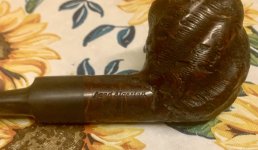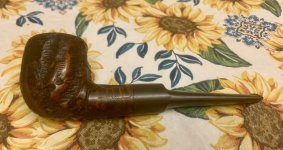The kind I’m obsessed with is the top export grade from Algeria before the 1954 Algerian War of Indepence.
Dunhill used it for Shell pipes. BBB used it exclusively until supplies ran out. Marx and Mincer and Howard used it. Rogers and Edward’s used it maybe the longest.
Since 1962 French Algeria has been the People’s Democratic Republic of Algeria which is not democratic and not a republic and the people are almost all Muslims with a really, really bad grudge against Westerners because the French tortured, raped, and murdered them by the millions for over a hundred years.
But when the bloom was on the rose of the French Algerian briar all sources agreed the French had to boil and cure the briar a lot longer, and then season it by air drying much longer, and then the makers further aged the cut blocks even longer, for flavor.
Today Castello advertises they only use briar aged ten years or more and those are blocks that were cured and seasoned, before aging.
That extra aging is supposed to make it better, like aging bourbon.
Once bourbon is bottled it no longer ages.
And aging of briar blocks was done in covered but opened warehouses.
When pipes are made they are sanded, polished and often sealed with a hard finish. Then they usually don’t get subjected to temperature and humidity extremes.
I’ve read where Eric Nording doesn’t believe in aging briar more than it needs to be seasoned enough to work into pipes.
I’ve broken in two new Nordings in a lifetime and it was not a pleasant experience but eventually they quit getting hot and sweating and tasting like burned briar.
But maybe those blocks were not cured enough before they were seasoned,
This morning I have a huge dollop of Carter Hall in that Aged Algerian Tom Howard, which is over seventy years old, and the angels in heaven don’t have any better pipe than mine to smoke.
But there’s a chance the burl used first grew before the French invaded Algeria in 1830. Its certainly very, very old however old it is.
Aging can’t hurt briar.
And it might release the bad little mojos from inside the wood so the good little mojos in there can help Carter Hall taste like it cost ten dollars an ounce.











